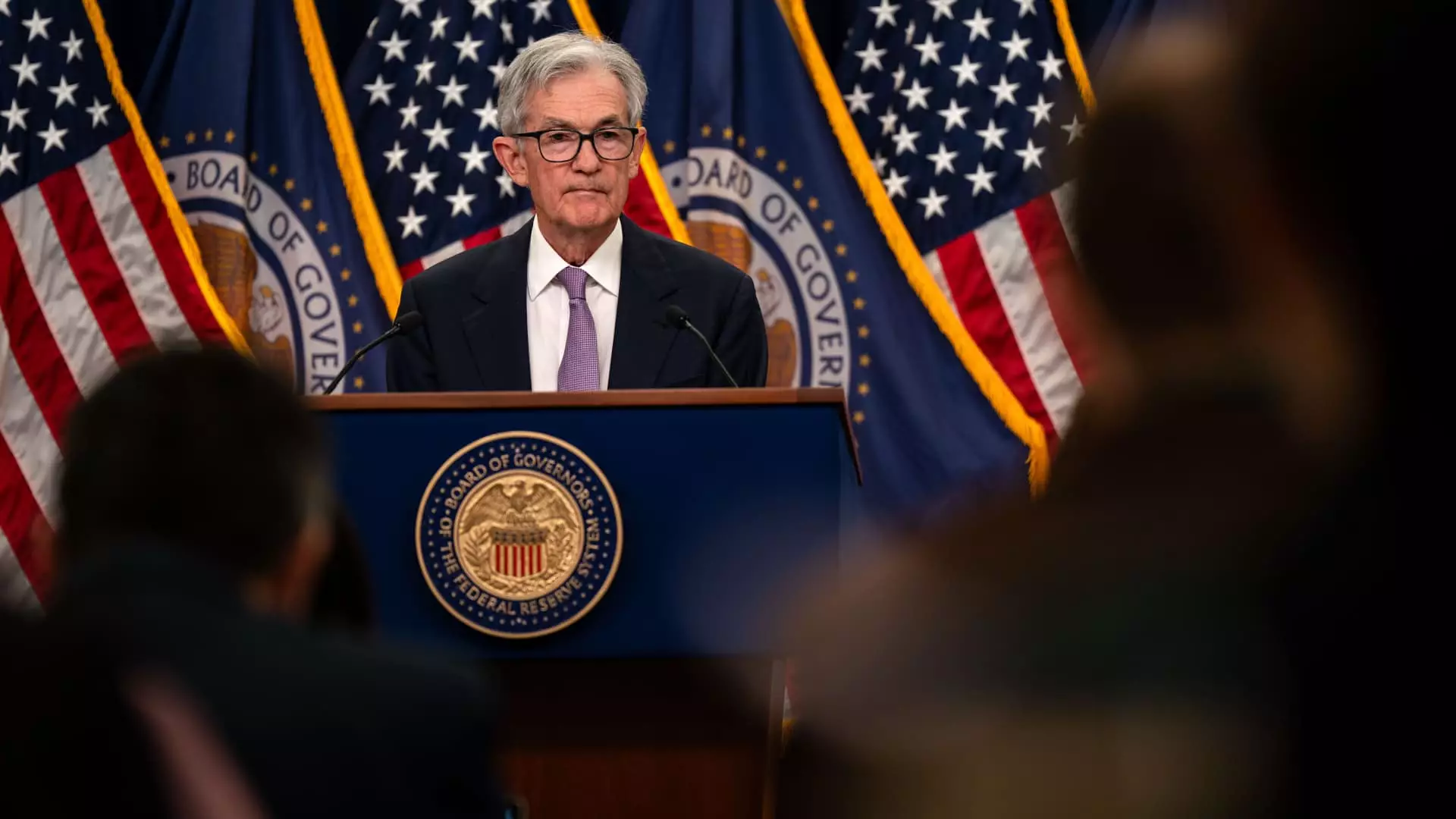The recent actions and deliberations of the Federal Reserve reveal a complicated landscape shaped by economic indicators and political dynamics. In the wake of President-elect Donald Trump’s electoral victory in November, a palpable sense of caution has emerged among Federal Reserve officials concerning monetary policy, particularly concerning inflationary pressures and their potential correlation with sweeping policy reforms anticipated under the new administration. As outlined in the Fed’s December meeting minutes, the board is approaching economic policymaking with a delicate balance, mindful of a host of uncertain variables.
During their December session, Federal Reserve officials expressed a clear recognition of rising risks surrounding inflation. Although they refrained from directly naming Trump, references to potential changes in immigration and trade policies dominated discussions. The uncertainty surrounding these changes has prompted the Fed to tread carefully on interest rate adjustments. The minutes noted an increase in upside risks to inflation projections, a sentiment echoed by recent data indicating stronger-than-expected inflationary trends.
At its core, inflation has proven to be a crucial metric. The Fed has consistently aimed for a 2% annual inflation target, but recent readings have exceeded this benchmark, suggesting that consumer price increases could reflect broader economic shifts. One particular statistic is telling: core inflation measured at 2.4% in November, rising to 2.8% when food and energy costs are included. Many Federal Reserve officials are now starting to anticipate that inflation may not revert to the targeted 2% level until 2027, adding further urgency to their reviews of monetary policy.
Impact of Political Dynamics
The Federal Reserve’s cautious stance cannot be disentangled from the political environment, notably the forthcoming policies under President Trump. Traders and economists are particularly concerned about the proposed aggressive tariffs on trading partners such as China, Mexico, and Canada. Such protectionist measures not only threaten to disrupt established trade relationships but also have the potential to reverberate throughout the economy — impacting costs, consumer spending, and investment decisions.
While tightening immigration policies could lead to a reduced labor force, thereby constraining economic growth, an increase in tariffs might drive up prices for goods and erode consumer purchasing power. The Federal Reserve board seems acutely aware of how Trump’s policies could lead to a “band of ambiguity,” requiring them to proceed with caution and stay flexible in their monetary policy decisions.
Amid these uncertainties, the Federal Reserve ultimately decided to lower the benchmark borrowing rate to a target range of 4.25%-4.5%. Changes in the outlook for anticipated interest rate cuts were also communicated, reducing the forecast from four potential cuts in 2025 to just two. This adjustment indicates a shift in how the Fed views its policy tools and their effectiveness in a landscape filled with variables influenced by external factors such as political decisions.
The meeting minutes further elaborated that the Members of the Federal Open Market Committee (FOMC) are now operating closer to a neutral policy stance—one that neither stimulates nor restricts economic activity excessively. They appear ready to adopt a wait-and-see approach, evaluating how the economy responds not only to existing policies but also to any forthcoming changes.
Encapsulating the Fed’s current mindset, Chair Jerome Powell likened monetary policy navigation to “driving on a foggy night” or “walking into a dark room full of furniture.” Such metaphors illustrate the Federal Reserve’s commitment to a gradual and measured approach. As inflation metrics remain above the desired target and the broader economic climate continues to evolve, taking the time to assess these factors becomes essential for informed decision-making.
The atmosphere within the FOMC reflects an overarching principle: decisions will be data-driven rather than bound to a preset schedule. Emerging indicators will guide future interest rate changes, ensuring that any adjustments are based on the most recent economic conditions rather than speculative forecasts.
As we look ahead toward 2026 and beyond, the Federal Reserve finds itself in uncharted waters, grappling with both economic and political uncertainties. The combination of rising inflation stats, evolving trade relationships, and potential policy shifts under the new administration presents a complex tableau for policymakers. Thus, patience and adaptability will be the guiding principles of the Fed as it charts its course in a dynamic environment. The path may be cautious, but it strives for responsiveness in nurturing economic stability in the face of change.

